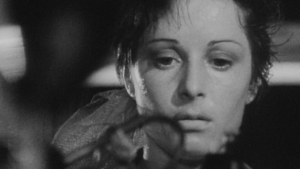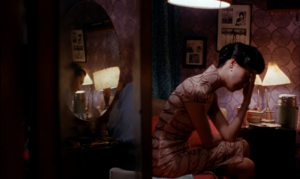The conversation around film criticism (and arts criticism more widely) is that it is in crisis. At the 2017 Karlovy Vary International Film Festival, American critic Leonard Maltin denounced new media for having democratised what he sees as a specialist skill: ‘There’s no shortage of good and intelligent film critics. There’s a lack of interest and there’s a dilution of criticism in general because of the internet and social media.’ On home shores, after severe cuts made by Fairfax Media – which had already made serial redundancies in preceding years – fears for criticism have escalated. Last year alone saw a hoard of articles declaring ‘crisis’, from RealTime’s roasting of Triple J (which ‘has found a way to crowdsource an emerging broadcaster at a budget price’) to Anwen Crawford’s The Monthly piece lamenting the dwindling of cultural discourse (‘This country’s culture is being starved, and with it any opportunity to understand ourselves as something other than subjects of a ruthless economy’). Yet, even in the face of such economic difficulties, Crawford holds the art of criticism in high esteem, arguing for its pride of place as a pursuit of passion and integrity:
[G]ood critics, passionate critics, are motivated by a desire to be the best audience member that they can be. A critic needs to be informed, enthusiastic, curious and open-minded […] I believe in the art of speaking back to art; of analysing it, arguing with it, celebrating it, sifting and sorting through its constituent elements.
Evidently, the Melbourne International Film Festival (MIFF) also believes in ‘speaking back to art’, inviting Crawford – alongside several other luminaries – to mentor for its fourth Critics Campus, a talent-development program designed to nurture emerging critical talent in Australia. Over five days, eight young hopefuls meet with individually assigned mentors – themselves working critics in Australia and abroad – and attend panel discussions and roundtables on issues including diversity in criticism, pitching to editors, the art of the interview, video and podcasting techniques, the relationship between filmmaking and criticism, and live editing workshops. The participants then produce four pieces of work: three for the MIFF blog (written articles or video essays plus an interview piece) and a final work preplaced with an external media outlet.
The pitching, securing and delivering of a professional piece of work is arguably Critics Campus’ most crucial assignment – for both the participants and MIFF. In addition to giving inexperienced critics an understanding of how to complete such a task, from inception to publication, it ensures high-calibre press coverage of the festival. (Festival coverage for an approved platform is also a condition of participation for campus mentors.)
In the context of Critics Campus, Crawford’s notion of the ‘ruthless economy’ was best clarified not through any formal discussions over the five days, but rather through real-life experiences of how the industry works. Participating in social and networking events alongside film screenings and campus activity, the mentees were afforded firsthand exposure to how important relationships built with editors and peers are when it comes to getting work and getting paid. Campus mentor and Australian correspondent for The Hollywood Reporter Harry Windsor was a perfect example of how Critics Campus can produce concrete results in terms of career development. Windsor was a participant in the inaugural program in 2014, and was invited back in 2017 as a mentor. Having come full circle, he attributed his success to his Critics Campus run, at the completion of which he had been offered a Hollywood Reporter role by his then-mentor, David Rooney.
Over the 2017 proceedings, the importance of networking and visibility was also emphasised, particularly when it came to the nuts and bolts of how to secure enough paid work to constitute at least a fragment of a living wage. But, make no mistake, none of the mentors were unrealistic about how difficult it is to earn a sustainable living from criticism alone. Returning, then, to Crawford’s sentiments about the pursuit of criticism as art, we see how the crisis takes shape. And it’s remarkably similar to the crisis likewise suffered by the art of the moving image. How can we focus on the art if it must be commercially viable? If we are too busy talking about how to cobble together a living, how to leverage contacts or how to do it all for free alongside a paid pursuit, we simply run out of time to talk about the art of the thing itself.
As a 2017 mentor myself – looking forward to getting into the nitty-gritty of how we evaluate visual art using verbal language, or how we might understand moving images as visual language – I was disappointed that so much of Critics Campus’ focus was on logistics. What’s stayed with me, and what I hope the conversation will return to, is Crawford’s insistence that good critics be passionate about being the best audience members they can be; ultimately, that is where art happens.





